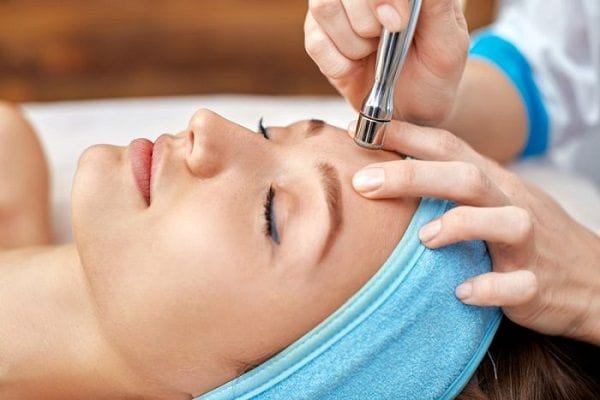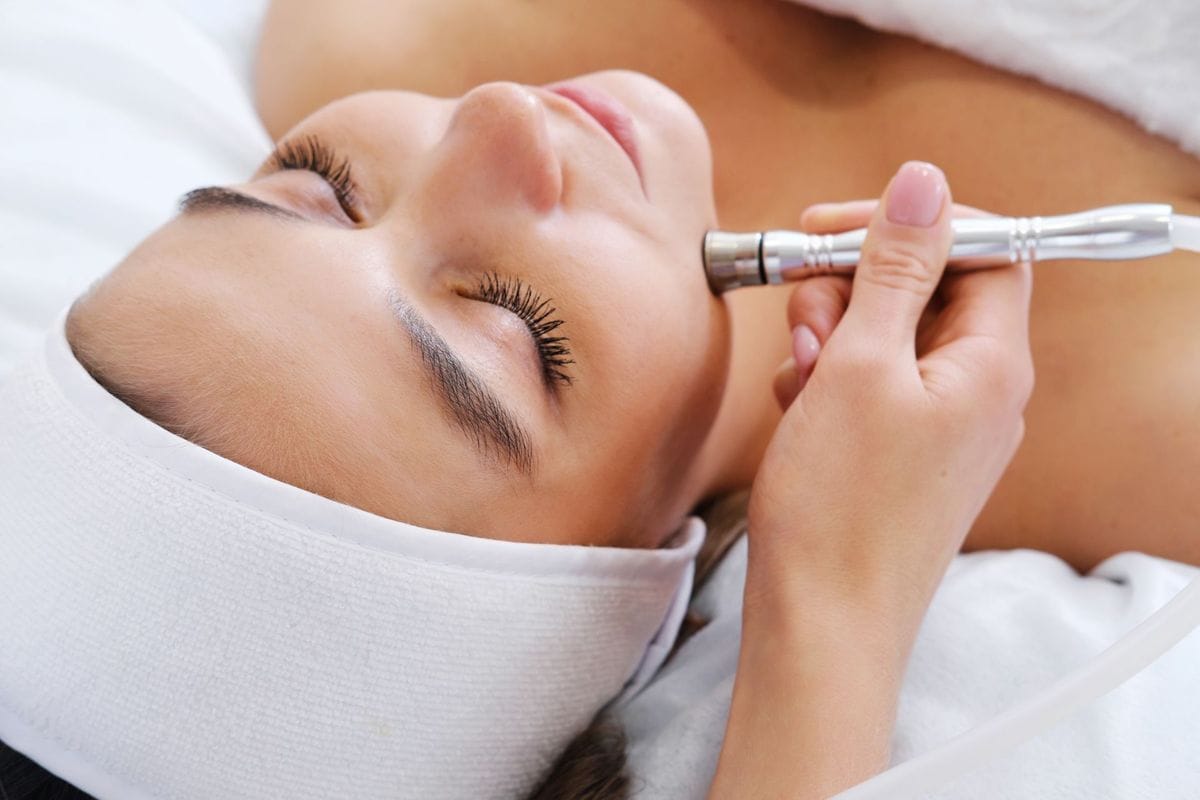Microdermabrasion is a popular cosmetic skin treatment known for enhancing skin texture and tone with minimal invasiveness. It gently exfoliates the top layer of the skin to remove dead skin cells and promote the growth of new, healthy skin. Whether you’re dealing with acne scars, fine lines, or uneven skin, microdermabrasion benefits can be a powerful rejuvenation method. This guide covers everything from how microdermabrasion works to who should get microdermabrasion and how to maximize results.
What is Microdermabrasion?
Microdermabrasion is a cosmetic procedure that gently exfoliates the outer layers of the skin. It is considered a minimally invasive procedure designed to improve the appearance of skin by targeting dead skin cells and promoting new cell growth. Microdermabrasion is one of the safest and most accessible skin care treatments available, often used on the face to treat various skin concerns. It enhances the skin’s natural radiance while being gentle enough for regular use.
How does microdermabrasion work?
Microdermabrasion works by using a device that either sprays fine crystals or has a diamond-tipped wand to gently exfoliate the top layer of your skin. The treatment uses vacuum suction to remove dead skin cells and stimulate collagen production. This process rejuvenates the skin and reduces the appearance of fine lines and sun damage.
Did you know?
Microdermabrasion stimulates collagen production, which helps reduce wrinkles and fine lines.
What are the different types of microdermabrasion?
There are two main types of microdermabrasion: crystal microdermabrasion and diamond-tip microdermabrasion. Crystal microdermabrasion uses aluminum oxide or sodium bicarbonate crystals to exfoliate, while diamond-tip devices gently exfoliate without crystals. Another microdermabrasion technique includes hydradermabrasion, which combines exfoliation with serums for added skin benefits. Each type of microdermabrasion targets different skin types and skin concerns, offering flexible options for treatment.
What does a typical microdermabrasion procedure involve?
A standard microdermabrasion procedure begins with a skin evaluation to determine your skin type and needs. The skin is then cleansed, and the device is applied to remove dead skin. The treatment usually lasts 30–60 minutes. Afterward, a soothing moisturizer and sunscreen are applied to protect the newly exposed layer of skin. The facial treatment is often relaxing and can be integrated into a routine skin care plan.
What are the Benefits of Microdermabrasion?

The benefits of microdermabrasion include improved skin tone and texture, reduced fine lines, clearer skin, and enhanced skin care product absorption. Microdermabrasion can make your skin look more radiant and youthful. It’s ideal for people who want cosmetic improvements without undergoing a chemical peel or laser procedure. Microdermabrasion benefits are noticeable almost immediately, and regular sessions lead to even better results. This method is praised for its rejuvenation effects and minimal downtime.
Did you know?
Regular microdermabrasion can significantly improve skin texture and tone, especially for those with sun damage.
How does microdermabrasion improve skin texture?
By removing the top layer of dead skin cells, microdermabrasion improves skin texture, making it smoother and softer. The process boosts collagen production, which is the protein in your skin responsible for firmness and elasticity. It helps reduce the appearance of fine lines, wrinkles, and uneven skin. Exfoliation also allows skincare products to penetrate deeper, enhancing their effectiveness.
Can microdermabrasion help with acne scars?
Yes, microdermabrasion can help fade acne scars by exfoliating the layer of dead skin cells and stimulating new skin growth. Though it’s more effective for superficial acne scars, repeated sessions can significantly improve the appearance of your skin.
What are the long-term effects of microdermabrasion?
The long-term effects of microdermabrasion include enhanced collagen production, reduced signs of aging, and improved skin texture and tone. Consistent treatments keep your skin healthy and radiant. Over time, the appearance of skin continues to improve, especially with good skin care practices. Microdermabrasion results build over time, making it a preferred skin treatment for ongoing rejuvenation.
Did you know?
Microdermabrasion may enhance the effectiveness of your skincare products by allowing deeper absorption into the skin.
Who is a Good Candidate for Microdermabrasion?
A good candidate for microdermabrasion is someone with minor skin imperfections like dullness, uneven tone, or superficial acne scars. Those with fine lines, mild sun damage, or clogged pores can also benefit from the treatment. It’s especially helpful for people who want a non-invasive skin treatment. However, individuals should always have a dermatologist evaluate their skin to ensure suitability.
What skin types are suitable for microdermabrasion?
Microdermabrasion is suitable for many skin types and skin tones, including oily, dry, and combination skin. It can be safely used on various skin without causing major irritation, especially when tailored to individual skin conditions. The procedure can even out your skin tone and brighten your complexion.
Are there any skin conditions that disqualify you from treatment?
Yes, certain skin conditions such as active rosacea, eczema, or severe acne can disqualify you from receiving microdermabrasion. Always consult a dermatologist to evaluate your skin before treatment. Following skin issues should be addressed with alternative methods.
Can sensitive skin benefit from microdermabrasion?
Sensitive skin may benefit from microdermabrasion when performed with gentle settings and under professional supervision. It’s essential to monitor reactions and use proper aftercare to avoid irritation. With the right approach, sensitive skin can achieve a healthy glow and clearer skin without harsh reactions.
What are the Side Effects of Microdermabrasion?

Common side effects of microdermabrasion include temporary redness, mild swelling, and dryness. Microdermabrasion is generally well-tolerated, but some individuals may experience peeling or sensitivity. Microdermabrasion can sometimes lead to mild bruising if suction is too strong.
How to minimize side effects after treatment?
To minimize side effects, use soothing moisturizers, avoid direct sun exposure, and skip harsh exfoliation for a few days. Keep your skin clean and hydrated. Avoiding makeup for 24 hours can also help maintain the appearance of your skin and reduce the risk of irritation.
Is microdermabrasion safe for everyone?
Microdermabrasion is considered safe for most people but should be avoided if you have certain skin conditions. Microdermabrasion is a minimally invasive treatment, but it’s crucial to consult a dermatologist first. Microdermabrasion is safe when performed correctly by a trained professional, especially for those looking for a gentle way to exfoliate and refresh the skin.
How to Prepare for Microdermabrasion?
Before treatment, avoid retinoids, chemical exfoliants, and direct sunlight for at least a week. Clean your skin thoroughly and avoid applying any creams or makeup. Facial treatment is most effective on fresh, clean skin. Skincare professionals may also recommend stopping certain medications temporarily before the procedure.
Are there any products to avoid prior to the procedure?
Yes, avoid products with glycolic acid, salicylic acid, and retinol. These ingredients can make your skin more sensitive and increase the risk of irritation during treatment. You should also avoid exfoliating scrubs or chemical peel products.
What Results Can You Expect from Microdermabrasion?
You can expect smoother skin, reduced fine lines, and a more even skin tone. The appearance of your skin often improves after one session, but multiple sessions may be needed. Studies show microdermabrasion improves skin texture and enhances skincare absorption. Microdermabrasion improves both the look and feel of your skin by removing the layer of dead skin cells.
How many sessions of microdermabrasion are needed for noticeable results?
Most people see results after 3–6 sessions. Your dermatologist may recommend more sessions depending on your skin concerns and goals. Microdermabrasion results vary based on skin type and frequency of treatments. Regular sessions support long-term improvements in texture and appearance.
What improvements can be seen after microdermabrasion?
Expect to see reduced acne, less noticeable acne scars, and a brighter, more youthful complexion. The treatment helps exfoliate dead skin, revealing the smoother skin underneath. It can also reduce the appearance of fine lines and improve uneven skin tone. Skin will feel fresher and cleaner, helping you maintain a clearer complexion.
How to maintain results after treatment?
To maintain results, follow a consistent skin care routine, use sunscreen, and schedule periodic treatments. Moisturize daily to keep your skin smooth and hydrated. Avoiding sun damage and exfoliating gently at home can extend the benefits. A good routine post-microdermabrasion includes hydrating serums and products that promote collagen.
Frequently Asked Questions about Microdermabrasion
What does microdermabrasion do to your face?
Microdermabrasion facial treatments gently exfoliate the top layer of your skin to remove dead skin cells, stimulate collagen, and improve skin tone. This cosmetic method rejuvenates dull or damaged skin, making the skin look clearer and smoother with reduced fine lines.
Is microdermabrasion actually good for your skin?
Yes, microdermabrasion is considered a cosmetic skin treatment that can exfoliate and smooth the outer layer of skin, improving uneven skin tone and reducing the appearance of wrinkles and acne scars. It helps remove dead skin and enhances the absorption of skin care products, supporting overall skin health.
How long do microdermabrasion results last?
Microdermabrasion results typically last one month, but smoother, brighter skin may remain visible for longer with proper maintenance. To preserve the appearance of your skin, regular sessions and post-treatment skin care help maintain the skin’s glow and collagen stimulation.
How much does micro dermabrasion cost?
The cost of microdermabrasion varies by location, but a single facial treatment usually ranges from $75 to $200. Crystal microdermabrasion and diamond-tip procedures may differ in price depending on the type of microdermabrasion and whether it’s part of a larger skin treatment package.
what is facial benefits?
Facial benefits of microdermabrasion include smoother skin texture, improved skin tone, minimized fine lines, and reduced clogged pores. It’s a gentle, non-chemical peel alternative that refreshes the layer of skin and stimulates collagen, offering cosmetic rejuvenation with minimal downtime.
Microdermabrasion is a cosmetic solution that can dramatically improve the look of your skin with consistent care. Whether you want to reduce the appearance of fine lines, acne scars, or just exfoliate and refresh, microdermabrasion is a safe and effective choice. Have you tried microdermabrasion before? Share your experience and let others know how this minimally invasive method transformed your skin!
Read also about Intense Pulsed Light Therapy